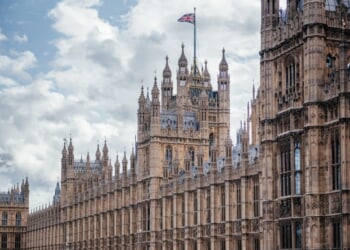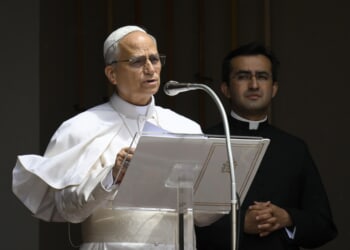Google your local Conservative Association, or your local Reform UK group. What do you find?
Odds are: a grainy header photo, a template website that looks abandoned, perhaps an ancient “Meet your MP” flyer from 2019 – if you’re lucky… a contact email address that doesn’t bounce. There’s no upcoming events page. No listed officers. No newsletter archive. No visible way to join in. No signposts on how to volunteer, donate, or attend meetings.
Even the main Conservative Party website has been stripped back. Business relations? Gone. Membership login area? Missing. It no longer offers any central hub for activism, no real resources, and no visible online presence that makes you believe this is a political movement serious about growth or mobilisation.
This isn’t a local issue – it is endemic.
If someone like me, already politically engaged and motivated, can’t figure out how to rejoin, get involved, or attend a local event, what hope does a curious voter have? We cannot talk seriously about political renewal on the centre-right while this is the state of our infrastructure.
Let’s be real: Reform UK has no serious infrastructure. Their websites are broken; their systems non-existent. But they dominate in one area: noise. A few well-placed clips and Facebook shares do more for them than our entire outreach operation. They have figured out that communication matters. Even if the content is questionable.
Yet what should be an easy win for the Conservatives, or any centre-right movement, has become another failure of delivery – a proper infrastructure gap. At the moment, neither party is ready to contest a general election effectively.
Reform talk about the two-child benefit cap while pretending their economic plans would cost nothing. The Conservatives are too scared to touch the issue for fear of opening another front. The result? Confusion and silence. No campaign plan. No digital rebuttal machine. No grassroots mobilisation. Just more drift.
Here’s the uncomfortable truth: party membership gives you almost nothing.
There’s no membership portal. No clear dashboard. No way to see what’s happening locally. No volunteer sign-up form that works. If you have accessibility needs or use a screen reader, good luck navigating the PDF newsletter from 2021 still pinned to the homepage. For younger members, there’s no WhatsApp group, no mentorship scheme, no campaign training calendar. You are just left to fend for yourself.
You pay £25 to £39 a year and get no roadmap, no sense of belonging, and no ability to contribute meaningfully unless you’re already on the inside. Meanwhile, Labour’s 400,000 members benefit from digital hubs like Organise, which allows for targeted canvassing, regional campaign groups, and a fully connected network of members at national and local levels.
Even the Liberal Democrats, with around 100,000 members, use NationBuilder, accessible templates, and segmented data to deliver sharp, coordinated campaigns with minimal waste. And we wonder why enthusiasm is evaporating?
Much of the local Conservative Party machinery is still being run entirely by volunteers, often retirees doing their best. They should be thanked, not blamed – but they also shouldn’t be left alone to run the whole ship. We’ve relied too long on committees that meet once a year in a pub back room, where the highlight is setting a date for a dinner with Robert Jenrick telling us about his next “based” video or Suella Braverman delivering lines she workshopped on GBNews.
There’s no strategic planning, no digital oversight, no serious engagement with membership. Campaign organisers are left without support. There is no national comms pack, no templates, no comms leads, and no training pipeline. If you want to knock on doors or deliver leaflets, you need to find a phone number on a WordPress site that hasn’t been updated since Theresa May.
When I worked at CCHQ, I saw the potential of tools like Campaign Builder, Bluetree, and VoteSource. These platforms weren’t perfect, but they could have been improved and adopted widely.
VoteSource remains slow and clunky. Bluetree websites are only used by a handful of Associations and usually in template form, missing any unique or engaging local content. Even Mailchimp locally is underutilised or misused. Newsletters arrive without formatting, without images, or worse, without content. Accessibility is rarely considered.
There’s no consistent branding, no mobile-friendly design, and no clear messaging. When was the last time your local Association emailed you about campaign events, local policy updates, training sessions or social gatherings. And if they did, was it readable? Shareable? Engaging? I suspect not.
Let’s be clear: elections are still won on the doorstep, not the timeline. But digital infrastructure supports and scales your campaign. If your activists can’t find campaign events, if new members can’t get involved, and if young people feel alienated by bad websites and inaccessible comms, then your campaign will never reach full strength.
You need structure to recruit. You need content to inspire. You need portals to manage logistics. You need digital communities that make people want to join, not just donate The lack of local digital engagement is a huge missed opportunity. It is why turnout at campaign days is low. Why young talent walks away. Why digital officers quit after one attempt at making sense of the system.
There’s an army of young, capable centre-right people ready to get to work. But they need to be given tools, trust, and a brief. Not just asked to deliver leaflets, but to lead.
We need:
- A national membership platform where users can manage subscriptions, sign up for campaign days, access training, and connect with others.
- A mandatory audit of every Association website. If it hasn’t been updated in six months, it should be replaced or taken over by a centralised content team.
- A shared national volunteer dashboard. If someone signs up in Worthing, someone in Worthing should know.
- A properly resourced communications training programme, available on-demand and in person.
- Every Association to have a designated Digital Lead, supported with real templates and tools.
- A localised campaign centre for graphics, WhatsApp packs, rebuttal notes, and literature; all managed through a centralised, user-friendly platform.
This is not a call for another commission, consultation, or focus group. This is a call for someone – inside CCHQ or outside – to grab the bull by the horns and rebuild the party’s digital and local infrastructure from the ground up.
We do not need flashy slogans or slick ads. We need something far more powerful: a platform that works, a process that welcomes, and a party that can explain – clearly, accessibly, and credibly – why it exists and how you can be part of it. Because right now, the only digital trace many local parties leave is Jane in her 90s retweeting anti-immigrant memes in a Facebook group, and that is not a strategy.
It is time to be serious. It is time to build.



![Former Bravo Star Charged After Violent Assault Using a Rock-Filled Sock in Tennessee Walmart [WATCH]](https://www.right2024.com/wp-content/uploads/2025/07/Former-Bravo-Star-Charged-After-Violent-Assault-Using-a-Rock-Filled-350x250.jpg)



![Illegal Alien Walked Free After Decapitating Woman, Abusing Corpse for Weeks [WATCH]](https://www.right2024.com/wp-content/uploads/2025/07/1753013138_Illegal-Alien-Walked-Free-After-Decapitating-Woman-Abusing-Corpse-for-350x250.jpg)
![NYC Man Snatches Child Off The Sidewalk, Parents Chase Him Down [WATCH]](https://www.right2024.com/wp-content/uploads/2025/07/NYC-Man-Snatches-Child-Off-The-Sidewalk-Parents-Chase-Him-350x250.jpg)
![Man Arrested After Screaming at Senators During Big Beautiful Bill Debate [WATCH]](https://www.right2024.com/wp-content/uploads/2025/06/Man-Arrested-After-Screaming-at-Senators-During-Big-Beautiful-Bill-350x250.jpg)
![Karoline Leavitt Levels CNN's Kaitlan Collins and Other Legacy Media Reporters [WATCH]](https://www.right2024.com/wp-content/uploads/2025/07/Karoline-Leavitt-Levels-CNNs-Kaitlan-Collins-and-Other-Legacy-Media-350x250.jpg)
![Leftists Lose Their Minds After Jason Kelce Celebrates Being an American [WATCH]](https://www.right2024.com/wp-content/uploads/2025/07/Leftists-Lose-Their-Minds-After-Jason-Kelce-Celebrates-Being-an-350x250.jpg)





